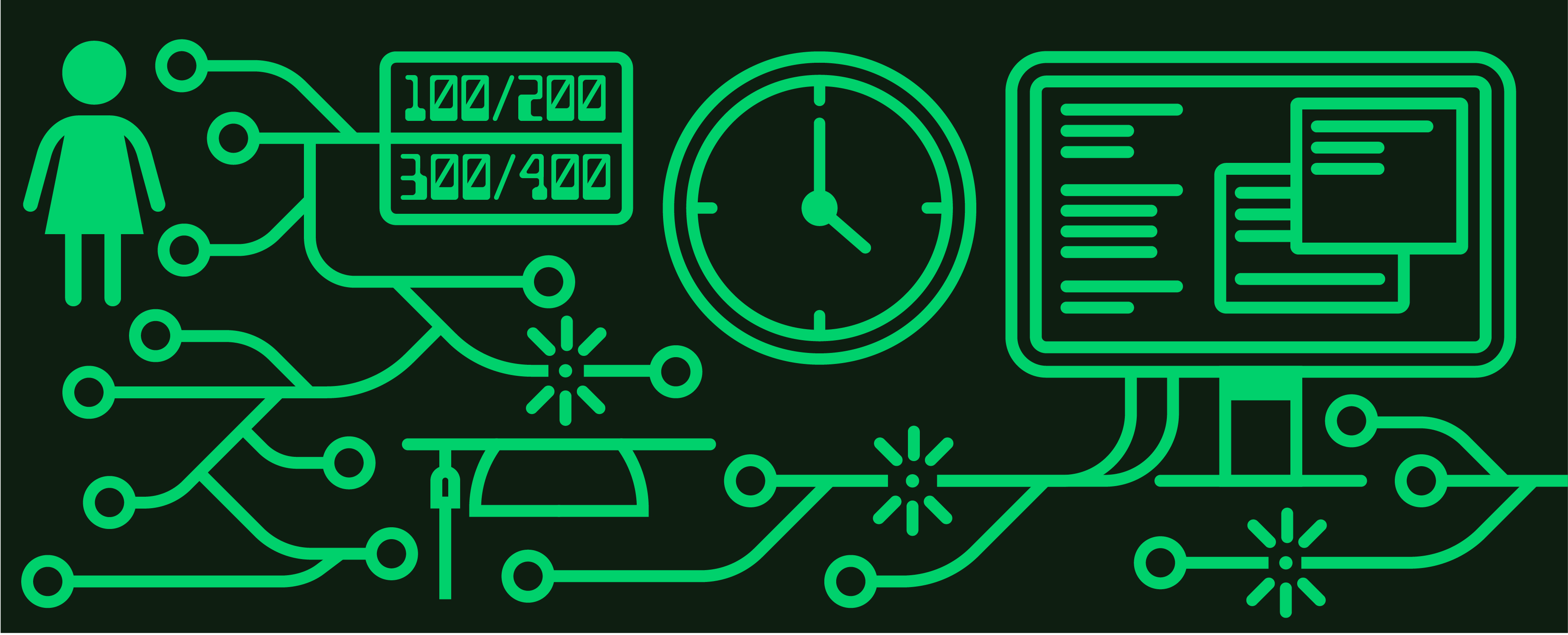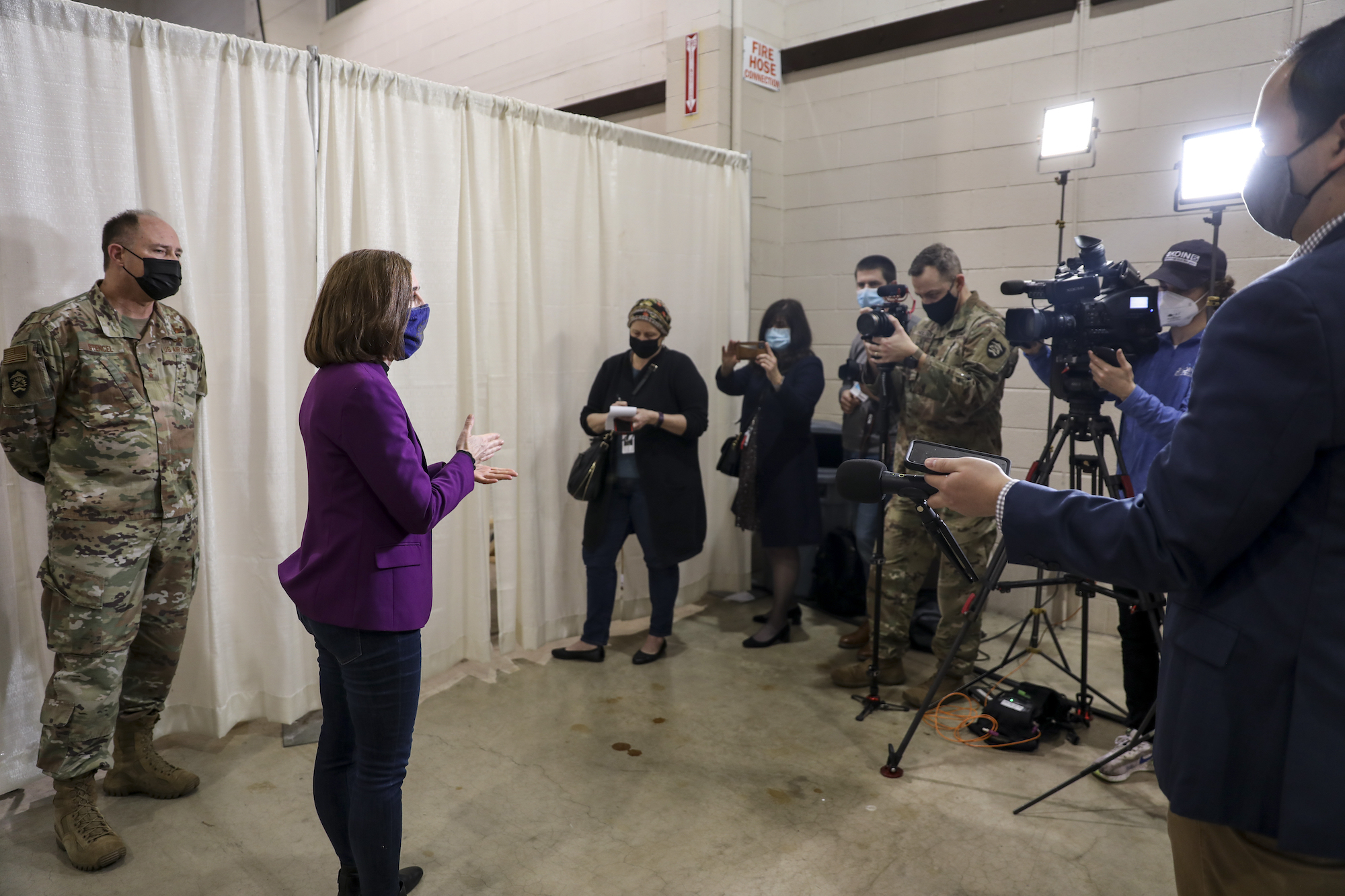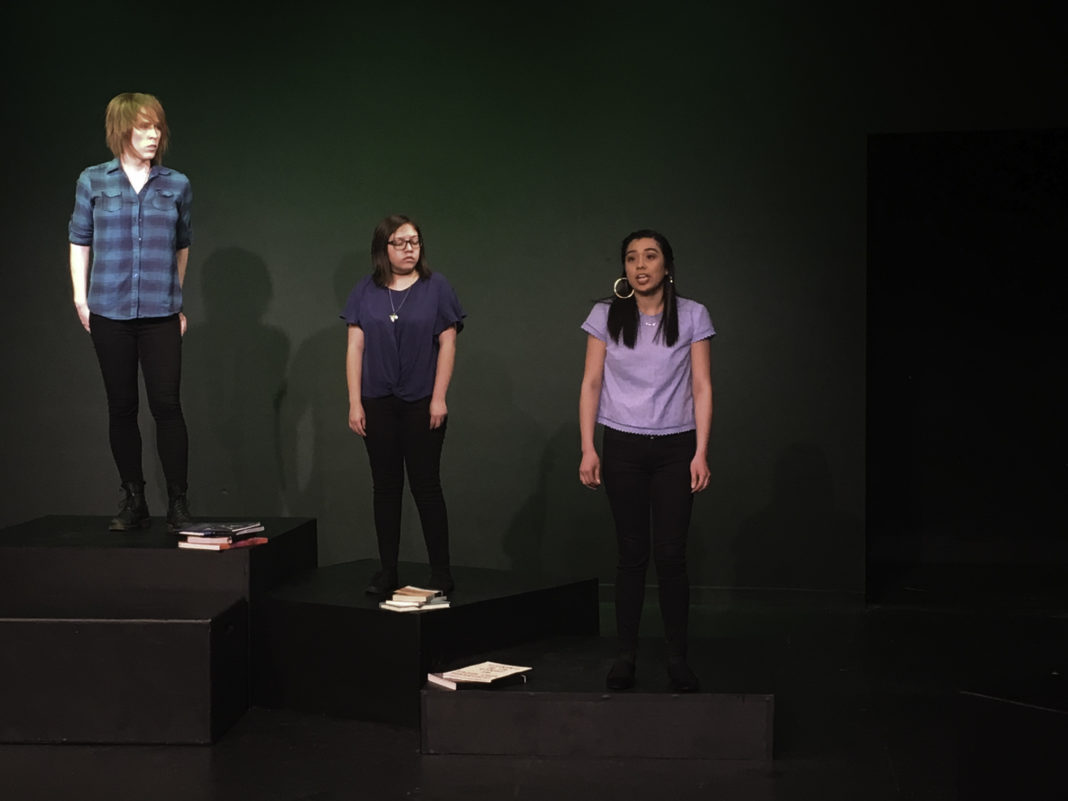In September 2018, 355 students entered Portland State’s degree program in computer science, located in the Maseeh College of Engineering and Computer Science (MCECS), according to student research. By the end of the year, only 243 of them would remain.
Out of the 142 students that departed the college, 31 were female students, which together composed 44% of the program’s entering female cohort that year.
PSU’s computer science (CS) program has long struggled to retain its students’ enrollment. It wasn’t until the 2017–18 academic year that the program finally managed to retain more than half of its entering students, according to student research data. Although COVID-19 has led to a college-wide enrollment epidemic, the CS department’s troubles extend beyond the events of the past year.
While most departments and degrees are separated into lower-division and upper-division coursework, the actual distinction between the two divisions largely comes down to student standing or course number. The CS program is unusual, as it is one of the only programs throughout PSU that contains an additional barrier of application between these two divisions.
In order to be accepted into the CS program’s upper division, a selection of mandatory course requirements must be met, as well as passable completion of what the department calls a “proficiency demo.” For transfer students coming in from institutions such as CCC or PCC, the proficiency demo is taken several months before starting their education at PSU, but for ongoing students, the demo is baked directly into the curriculum for CS202, one of the program’s required courses.
The structure of the proficiency demo is a simple one-hour examination, where students are given a single programming prompt and are given an hour to complete the prompt. The demo is designed similarly to the types of questions often seen in job interviews, thus hopefully preparing students for their eventual transition into the industry.
The proficiency demo is still relatively new to the program, having only been first initiated several years back. While many students regard the demo as being effective for learning and testing programming proficiency, its high complexity and erratic difficulty curve make it controversial among the lower-division student body. If students fail the demo, their acceptance into the program can be delayed by an entire term. For students enrolled in a class such as CS202, that can mean having to retake the full class, which can put an undue burden on students’ financial stability and GPA.
“The first proficiency demo I took in CS163 was really rough,” said a student who asked to remain anonymous. “I froze from the pressure, and the thought of having to retake the class from getting a question that I wasn’t prepared for really stressed me out. The anxiety was overwhelming.”
The demo problems range from being very simplistic to sometimes frustratingly complex. Some students have complained that this structure results in an unfair testing environment, where students are tested on an unequal level. Students draw problems randomly, and are allowed to redraw their problem up to two times if they feel that the question they got was too hard. Despite this, students can still get stuck with high-level questions, and the problem-picking process “only adds more stress to an already stressful situation,” according to the student.
“My proficiency demo question was borderline trivially easy, while some of my classmates, who I considered at the time to be better programmers than myself, had a considerably harder time,” said Blaine Holbert, an alum of the program. “I think that’s exceptionally unfair. Instructors can make the demo seem a lot more daunting than it actually is, which makes students dread it rather than prepare for it.”
The demo’s variable difficulty forces students to study extensively in the weeks or even months leading up to the demos, which can be extremely hard for people who have ongoing responsibilities, such as work or caring for their family. This kind of pressure can heavily affect students who have less access to resources, such as female students or underrepresented or marginalized (URM) students.
“The demos seem to prioritize students who have had more privileges than others,” said Naya Mairena, a sophomore CS student. “I think they weed out students, but not in the way they intend to. I am Latina with an immigrant parent, and I grew up in Rockwood, which is a low-income area in the Portland Metro area. I had to go above and beyond to push myself and find that success.”
Some students feel the department’s silence on its lack of student diversity contradicts PSU’s inclusive mission statement. “I am constantly hearing about how CS and the tech industry lacks diversity, but I don’t see [the department] taking the necessary steps to making CS easily accessible to those who are underrepresented,” Mairena said.
“The racial diversity of the program is embarrassingly dire,” said Sarah Haskew, a graduating senior in the CS program and a student researcher working on compiling data on student retention. “I can say that from the [interviews with students] that students who come from backgrounds underrepresented in computing have a harder time in CS.”
Because of student privacy concerns, it’s difficult for researchers to process data on student demographics without potentially violating confidentiality policies. Haskew, alongside fellow student researchers Alyssa Tamayo, Danielle Beyer and Shawn Spears, ran into particular trouble trying to process data on student racial demographics, since most of the data they were able to access only distinguished between URM and non-URM students. Similarly, despite the fact that Oregon was one of the first states to accept nonbinary gender classification, most of the data received was split into either male, female or undisclosed legal sex.
“It made it so it was only worth it data-wise to focus on comparing binary gender because it’s the only place we had data, which is super frustrating when you give a whole presentation about representation and struggles to faculty and then someone says, ‘I liked your women in CS presentation,’” Haskew said. “It’s hard to evaluate complex data from multiple sources and draw specific conclusions.”
The data also doesn’t include demographics or information about students whose success on the proficiency demo may be dependent on a disability, although the absence of such data is likely due to student protection under the Family Educational Rights and Privacy Act (FERPA).
“I got really sick from my disability during fall term and had to retake 202 in the winter term, and managed to pass with a P/NP grade,” said Sam Zeigler, a sophomore in the program. “I find it incredibly unprofessional how [the department] is running the program. They are being completely elitist and oppressive to many different kinds of students.”
The program’s struggle with diversity is not just seen in student testimonies, but reflected in the department’s data. According to Haskew’s data, the retention rate among female freshmen in the program was as low as 28% in 2016-2017, and while there was an increase in years since, the retention rate for women in 2018–19 was just 56%, compared to 68% for men.
The retention rate of URM students was relatively on par with non-URM students across the past several years, with URM students even having a higher retention rate than non-URM students in some academic years. Despite this, the diversity of the program remains low. In the 2019–20 academic year, 69.52% of all entering CS students identified as non-URM, compared to only 30.48% entering URM students.
Gender diversity suffers an even greater gap—in the same academic year, 80% of all entering CS students were male, with an entering female cohort of only 18.41% (the remaining 1.59% of students either identified as gender-nonbinary or didn’t disclose their gender). Between 2014 and 2017, the CS department suffered a retention rate 8–14% lower than the university average, with an even greater disparity when compared to the national university average.
“I hear frequently how the PSU CS department is scratching its head with why it lacks diversity, and the answer is because only the people who can afford to fail can keep trying,” said another student who also requested to stay anonymous. “This means people with money. People with already successful parents who can afford to stimulate their child’s education. People who aren’t relying on grants or the GI bill.”
Additionally, because the proficiency demo is often taken in the second year of a student’s education, failure is more likely to demotivate or encourage students to drop out because they still aren’t very far within their academic career. Many students consider the proficiency demo to be the most challenging requirement in the entire program, which is directly reflected in the program’s retention rate per division.
During the 2017–18 academic year, student retention in the lower division was 69%, with lower-division post-baccalaureate retention at 58% (postbac students also have to take the proficiency demo). In contrast, upper-division retention was 92%, and upper-division postbac retention was 87%. One fact that stands out is that the retention rate for female students in both undergraduate and postbac upper-division courses is higher than the retention rate for male students in the same cohort—the retention rate for female upper-division postbac students was 100% in the 2017–18 academic year.
“When you create a program which relies on successful and wealthy individuals propping people up, there’s no wonder those who have historically had a leg up make up most of the current program,” the anonymous student said. “Why make it harder for people? Why add yet another layer of bureaucracy and red tape to peoples’ lives?”
The growth of CS as a field in the past two decades has resulted in an over-enrollment epidemic for universities throughout the country. While CS undergraduate enrollment has exploded in the past two decades, the number of Ph.D. candidates has stayed the same, resulting in a wealth of new students and not enough professors to teach them. Over-enrollment has led to some colleges holding course lotteries or restricting the number of students who can enter degree programs, according to a 2019 article by The New York Times.
Many of the required courses in PSU’s CS program are offered only once a term, which can result in students not being able to take specific classes until an entire year after they’re suggested to. The lack of course openings often results in seniors filling up classes that are intended for junior students.
“I don’t understand why they’re only offering one section of CS300 [a required class] this fall,” Mairena said. “The classes filled up so fast and some of my peers missed out on being able to take them now.”
According to Ellie Harmon—a senior instructor in the department whose research and teaching focuses primarily on user experience and social and ethical considerations of software engineering—one of the major barriers faced by minority students in computer science is a lack of identification and familiarity with the field, as well as low self-confidence. Harmon notes that STEM professors tend to grade much more harshly than non-STEM professors, and even though women tend to get higher grades than men in CS coursework, the lack of confidence in female students results in a lower retention rate.
“It’s hard to even get to [students] without genuine interest and a sense of self-efficacy,” Harmon said.
Outside of student research projects and internal work by instructors such as Harmon, MCECS also has the Maseeh College Values Committee, which is dedicated to improving diversity and equity across the entire college, including the numerous engineering departments alongside the CS department. The committee aims to collect student feedback on issues such as department policies or instructor behavior, and then inform college leadership as needed and make potential suggestions for improvement.
“We, as a college, need to come to agreement on what the pressure points are in terms of our community members’ experiences,” said Joyce Pieretti, chair of the committee. “I think as members of the committee, we have a sense of what these concerns may be, but as a college, we have people across the spectrum of awareness, ranging from ‘I didn’t know this was a problem,’ to ‘this is a severe issue we needed to address yesterday.’”
The committee currently consists mostly of faculty members from the engineering department, with no professor representative from the CS faculty. Current CS department chair Mark Jones was the department’s representative prior to his appointment as department chair, but Pieretti said the committee is hoping to secure a CS representative by this fall.
“Improvements in student retention are a high priority of the Maseeh College leadership team, from the dean to department chairs and staff who are focused on student experience,” Jones said. “We have met frequently over the past year to discuss the importance of improving retention of our students and are taking a series of measures to do so.”
According to Jones, one plan to improve student retention is through the development of a hardship fund through philanthropic giving that has already helped multiple students, in addition to a 250% increase in student scholarships. Jones and the department are intent on keeping the proficiency demo as part of the program, but aim to rework the demo and move it into the upper division. Students will take the demo at a later stage in their education, when they hopefully have more programming experience, leaving them more prepared and less stressed for the demo.
“In much the same way that you would check that a music student has some proficiency with their chosen instrument…the proficiency demo plays an important role in our program,” Jones said. “But we also know that the proficiency demo has been a source of stress and anxiety for some students, often because of its prominent place in the criteria for admission to the CS major. After more than a year of deliberations and committee work, the department has developed a new admissions process and some associated curriculum revisions the CS faculty voted to adopt.”
Additional changes will include a modernization of the core degree curriculum, as well as a streamlined admissions process. Jones stated the changes should go into effect starting Fall 2022, pending Faculty Senate approval, and he’s hopeful that the new curriculum and structure will make the program “as open and accessible as possible to anyone who might be interested in exploring [computer science].”
“I think a good place to start is to make our courses more accessible, creating an environment in our department that is more encouraging of opportunities, and finding innovative ways to re-evaluate [the department’s] plan for increasing retention rates,” said Alejandro Castaneda, president of student-run organization We in Computer Science (WiCS). “The goal isn’t just having marginalized students in our classes, but rather having a college that empowers them and guides them to a successful career.”






